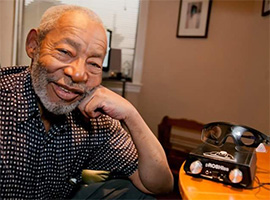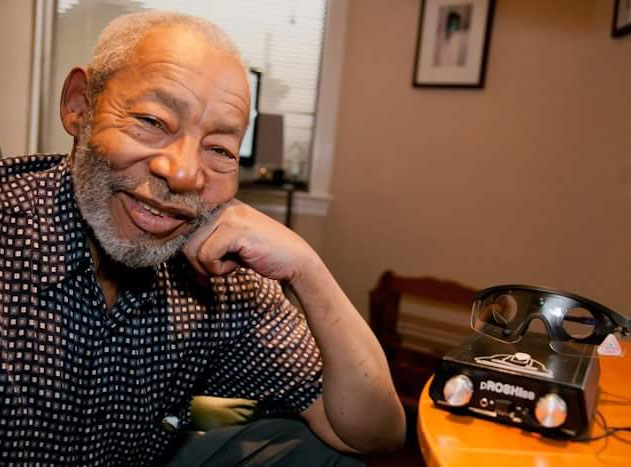Remembrances of Chuck Davis
by Siegfried Othmer | September 5th, 2017
We have lost Chuck Davis. And what a loss it is. Even among all the mavericks in this field, Chuck was an outlier. Like several other developers, he came to the field from prior work in aerospace. He was in excellent company. First there was Edward Dillingham, developer of the NeuroCybernetics; then there was Howard Lightstone, developer of the EEGer, and finally Bernhard Wandernoth, developer of Cygnet; and I had spent twenty years in aerospace research as well). In his early career, Chuck was involved with engineering control systems. Just as others have thought before him, it was natural to conjecture that the same methods might be relevant to the brain as well. After all, it faces the same issue of functioning as a control system. But it was the differences, rather than the commonalities, that turned out to matter most.
By some unfathomable mental pathway that creativity sometimes takes, he came to conceptualize one of the most sophisticated neurofeedback systems of the day, one that was unique in the field. At the outset, he did not know how to code, so he had to start there. He chose the versatile Amiga system as his design platform, for likely the same reasons that we did as well. It was a developer’s dream, and oriented from the ground up toward visual display. (The Amiga became our first feedback display; it was home to Pacman and Box Lights—the lasting legacy of our son Brian.)
Chuck was acquainted with the use of optical stimulation to support meditation and to affect brain function more generally. For that purpose it is generally used to promote EEG synchrony. Instead, Chuck deployed it in a manner that was disruptive to adverse activity in the brain—EEG activity that was excessively elevated or excessively synchronous—by analogy to our usual inhibit designs in neurofeedback. Having used very efficient coding, Chuck claimed to have the fastest gun in the West, figuratively speaking. Len Ochs invoked the same principle for the LENS system. Whereas the LENS operated via deviations in frequency, Chuck’s system challenged the brain in the phase domain. The distinction is minor in principle, if not in practice.
Both systems fall in the category of stimulation-based rather than reinforcement-based systems. They replace the passive inhibit we have in feedback with an active challenge to the brain. No demand is placed on the client to either engage or to perform. Both systems depended on detecting transient adverse EEG activity and then applying the disruptive stimulus. When Commodore, maker of the Amiga, went into bankruptcy some years later, both Chuck and we were set adrift. We had no choice but to go to a Windows-based system, but Chuck knew that he couldn’t replicate his program in Windows. He also hated Windows with a passion, so that was just not going to happen.
Driven by necessity, Chuck took advantage of the fact that the operating principle of his design had much broader applicability than he had assumed in his first design. The stimulation could simply be applied randomly; some of it would do some good; the rest of it would hopefully be innocuous. So it turned out to be. The principle at work is known as “Stochastic Resonance.”
Chuck didn’t have to go to the trouble of tracking the EEG and tailoring the response to the signal with as little delay as he could muster. He had turned his system into an open-loop system, and he unleashed his disruptive signal on all EEG frequencies in the conventional band out to 40 Hz. The effect was either benign or beneficial, by and large. The expectation is that people will experience the stimulation as calming, but the real benefit is expected to be in improved self-regulatory competence.
Inevitably, some people were irritated by the optical stimulation, but it was said that this sensitivity would decline with use. As an alternative, Chuck also provided for the option of electromagnetic stimulation.
Since this device was no longer tethered to the use of a desktop computer, it was now portable and was therefore called the personal ROSHI, or pROSHI. A second-generation design was launched some years later. Those who were fortunate enough to have the early Amiga-based systems held on to them until they died of old age.

A happy Chuck Davis with his beloved pROSHI.
Hershel Toomim offered Chuck a perch at his Biofeedback Institute of Los Angeles while Chuck was developing his system. Victoria Ibric was there at the same time. When we came along with the NeuroCybernetics, Hershel purchased a unit for his Institute, and it was Victoria who got to use it. Victoria is still relying on it to this day at her clinic, and she is combining it fruitfully with the pROSHI.
The effectiveness of the NC system got Hershel’s attention, but he did not credit the EEG training for the benefits. He thought it more likely that the EEG training was merely promoting increased cerebral blood flow, and that could be accomplished more readily than with a complicated EEG system. This launched him on the project that would occupy him for the rest of his professional life, the development and promotion of his infrared hemoencephalography (HEG) system.
Meanwhile, Victoria continued to work with the NC, establishing her own independent practice in Pasadena (taking over an office that we had started years before). Victoria is still relying on it to this day at her present clinic, and she has been combining it fruitfully with the pROSHI all along. Victoria’s was the most potent voice on behalf of the ROSHI project over all these years. Its most effective realization was in combination with a good neurofeedback instrument, just as she had been doing.
Chuck tended to work alone. His early partner in the development, Ray Wolf of Photosonix, moved on. Chuck would be on his own for the remainder of his life. And that has meant that the future of the pROSHI was not secured. His enthusiastic and devoted users, who call themselves Roshinis, are now on their own.
Chuck was a man of strong opinions, and he was never reluctant to share them. He was convinced that the reason his elegant approach was not more broadly accepted within the neurofeedback community was due to his being black. When I told him that this was more of an insider/outsider thing, and that others in the field, including ourselves, were originally subject to the same kind of exclusion by the custodians of the field, his eyes grew wide.
Those professional organizations that are least secure in their status are also the most vigilant with respect to the insider/outsider issue. When human communities feel threatened, they regress toward tribalism. In that regard, the biofeedback/neurofeedback community ranks fairly high. Among the professions, the capacity for rendering subtle judgments about relative quality, about tribal belonging, about self-versus-nonself, is considered a virtue. That is just what makes racism such a vexing issue. When a professional community feels insecure, novelty and innovation can loom as a threat. Looked at from Chuck’s perspective, the categorical rejection of his ideas was indistinguishable from racism.
When I visited Chuck a few weeks before his death, we mainly talked about his dreams for the future, which all wrapped around his pROSHI. Even while he was tethered to his hospital-bed by dire medical conditions and confronting grim prospects, he kept his eye single-mindedly on his vision. This will now have to be realized in other ways, and by other people. Chuck has left the world a better place.






I will miss Chuck and his unforgettable heart. I remember getting my first Roshi and he came to my office to set it up and show me how it works. We had an instant friendship, as I am sure many have had with him. He was just that kind of person. I also remember, when I was being somewhat impatient with getting something done, he told me that “you can’t push a river.” I have reminded myself of that many times over the years. I wish I could thank him for his enormous contribution to my life and the life of many of my patients. But then again … maybe he knows… Thanks Chuck, I will miss you.
Thanks so much Siegfried
I fondly remember Chuck and his innovative and collaborative nature.
Hal
Hi Sieg, Great article on Chuck. I believe that was Dr. Kirsch who introduced me to Chuck back in Denver CO at the ISNR event some years ago. He had a gravitational chair plus his Roshi and he invited me to try it, which I did, and believe me when i say it was an out-of-this-world experience, I finished dizzy, but happy and laughing with Chucks jokes .
Great guy, great mind, he will be missed!